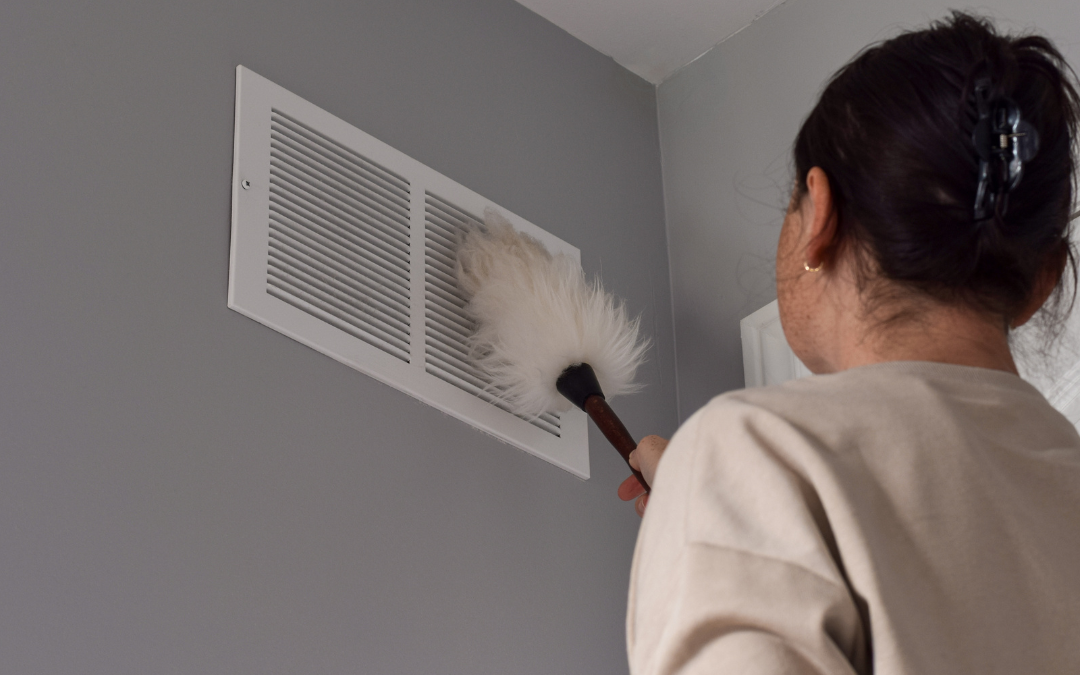Air Ducts:
In HVAC systems, air ducts are pathways that transfer air to and from different parts of a building. The purpose of these ducts is to channel air from the HVAC system into the conditioned spaces, and they are usually constructed of flexible plastic, sheet metal, or fiberglass. The HVAC system’s specifications and the building’s design dictate the shape and size of the air ducts, which might be round, rectangular, or oval.
Functions of Air Ducts:
- Distributing Conditioned Air: Air ducts’ principal role is to disperse conditioned air over the structure. Air ducts distribute the heated or cooled air from heating, ventilation, and air conditioning (HVAC) systems to various areas or rooms in a building.
- Return Air: The air ducts not only carry the conditioned air but also allow the old air to be recycled and reconditioned by the HVAC system. By sweeping away dust, pollen, and other allergens, this method aids in keeping indoor air quality high.
- Pressure Balancing: When the air ducts are well-designed, the HVAC system can keep the indoor air pressure where it needs to be. Maintaining a constant temperature throughout the building is possible by regulating the airflow through the ducts, which helps to avoid problems like hot and cold areas.
- Energy Efficiency: Minimizing heat loss or gain during the distribution of conditioned air is one way in which well-insulated and correctly sealed air ducts contribute to energy efficiency. Building owners can enjoy reduced utility expenses and reduced energy use thanks to this.
Air Vents:
Visible parts of the HVAC system that regulate airflow into and out of rooms are air vents, also called registers, grilles, or diffusers. Air vents are visible on the surface of the wall, floor, or ceiling and typically have movable louvers or dampers to control the airflow, in contrast to air ducts that are hidden within these same surfaces.
Functions of Air Vents:
- Air Distribution: Air vents ensure uniform airflow and temperature dispersion by distributing conditioned air from the building’s ducts into the building’s living rooms.
- Airflow Regulation: Adjustable louvers or dampers on vents let room occupants regulate the airflow entering and leaving a space. By regulating the airflow to individual rooms, users can achieve their ideal indoor climate while simultaneously maximizing the building’s energy efficiency.
- Air Filtration: To improve interior air quality and lessen occupant exposure to allergens, certain air vents are fitted with filters that trap airborne particles such as dust and pollen.
- Aesthetic Value: Air vents are available in a wide range of styles, finishes, and designs to match any building’s interior decor. They not only control the airflow but also add to the building’s aesthetic value.
Duct Design Considerations:
- Pressure Losses Due to Friction: Air moving around via ducts has pressure losses due to friction with the walls of the ducts. Reduced friction losses and improved airflow distribution are results of properly sized and designed ducts, which include features like smooth inner surfaces and gradual bends.
- Static Pressure: When air molecules move through a system of ducts, they exert a force known as static pressure. A building’s airflow and temperature distribution are both maintained at a constant level by balancing the static pressure levels. This eliminates problems like hot and cold spots.
- Velocity Profiles: Air velocity patterns in ducts affect the distribution of airflow and pressure properties. Maintaining laminar airflow, reducing turbulence, and optimizing system efficiency can be achieved by designing ducts with proper velocity profiles.
Ventilation Design Principles:
- Air Distribution Patterns: Based on room layout and occupancy requirements, properly designed ventilation systems use air vents to achieve desired airflow distribution patterns, such as radial, crossflow, or perimeter distribution.
- Air Change Rates: Finding the right air change rates involves balancing parameters including occupant density, pollutant sources, and outdoor air supply to guarantee proper ventilation and indoor air quality.
- Evaluation of Ventilation Effectiveness: In order to maximize occupant comfort and indoor air quality, it is necessary to evaluate the distribution uniformity, airflow patterns, and pollutant removal efficiency of the ventilation system.
Integration and Interaction:
Despite their differences, air ducts and air vents are complementary parts of HVAC systems that cooperate to provide the best possible interior air quality and comfort. Vents’ ability to efficiently and effectively distribute conditioned air to occupied spaces is affected by the air ducts’ design, layout, and performance. The ducting system’s ability to distribute airflow, maintain pressure balance, and control temperatures is affected by the design and functioning of air vents.
Achieving balanced airflow, homogeneous temperature distribution, and energy-efficient functioning of HVAC systems requires efficient integration and coordination between air ducts and air vents. Professionals in the HVAC industry can design, install, and maintain systems that consistently provide occupants with comfort, good indoor air quality, and energy savings by comprehending the functions and features of both components.
Key Differences:
- Location: Air ducts are hidden within surfaces like walls, floors, or ceilings, whereas air vents are exposed components that are mounted on these same surfaces.
- Function: A building’s air ducts distribute conditioned air throughout the structure and allow for the return of stale air to the HVAC system, while air vents regulate the flow of air into and out of rooms and assist in filtering, regulate, and distribute the air.
- Architectural Details: Metal, fiberglass, or flexible plastic conduits in cylindrical, rectangular, or oval shapes are common choices for air ducts, while air vents are available in a wide variety of styles, finishes, and designs to complement any building’s interior.
- Adjustability: The capacity to alter the airflow and tailor it to personal preferences is a key aspect of air vents, in contrast to air ducts, which are fixed components that occupants have no control over.
- Visibility: The visual appeal of a room can be improved by installing air vents, which are visible components, as opposed to air ducts, which are concealed beneath walls, floors, or ceilings.


